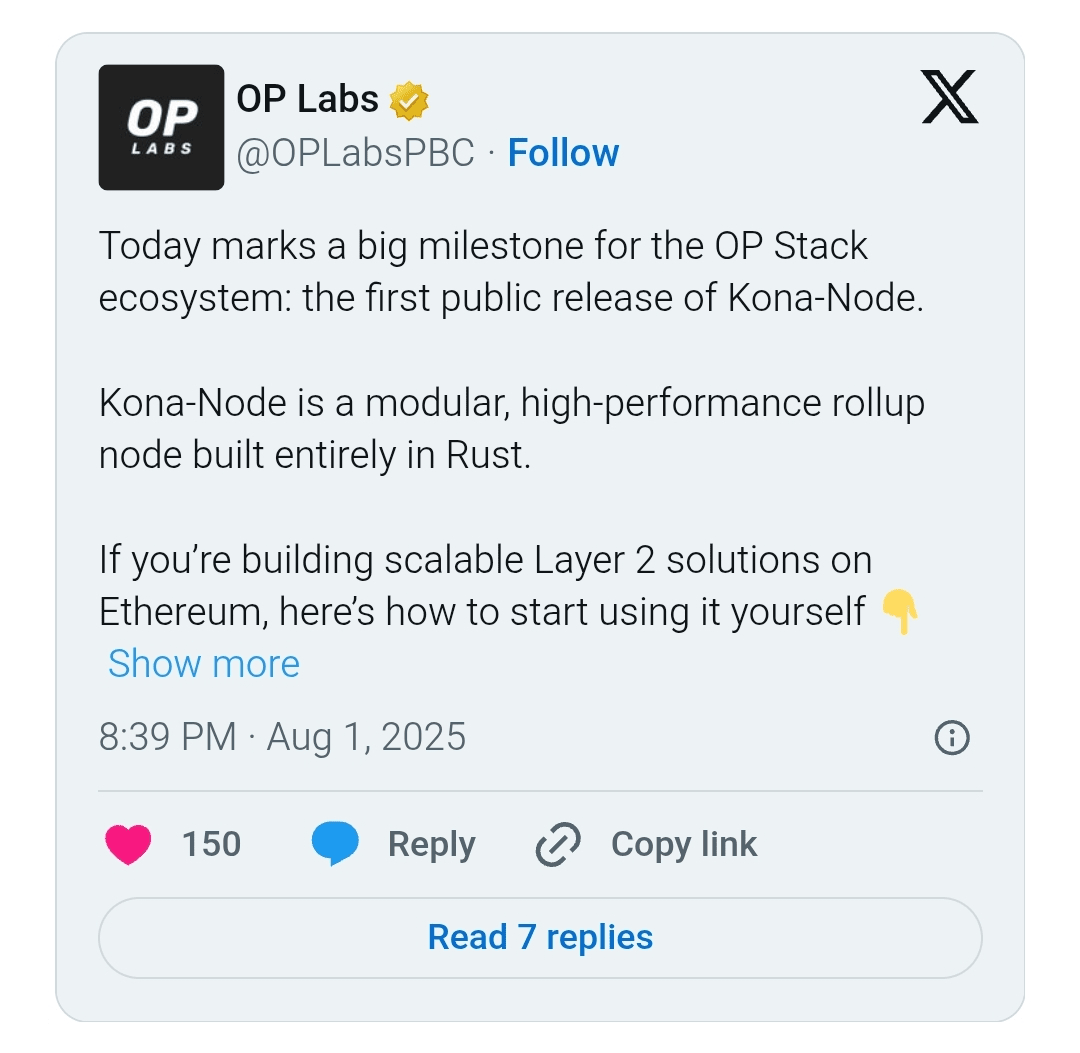In the OP Stack ecosystem, Kona-node was introduced – a new rollup node written in Rust. It has become an alternative to the standard Op-node client in Go, which is used in the Optimism network.
Developers noted the memory safety inherent in Rust and low resource consumption. The node supports several proof systems, including FPVM, SP1, and Risc0. Its code consists of only about 8000 lines.
The key difference between Kona-node and Op-node is the architecture. The new node uses an actor model with message passing, while the Go-based solution is built on a centralized event system. This approach simplifies code readability, increases resource efficiency, and speeds up the implementation of new features.
The main focus of Kona-node is on modularity. The node consists of separate components (crates) that can be combined to create custom rollups or integrate various verification systems. This allows Kona-node to be used as a ready-made application as well as a library for custom developments, promoting decentralization and the development of the OP Stack ecosystem.
According to L2Beat, the total secured value of Optimism is $3.46 billion.
At the time of writing, OP is trading at $0.66, according to CoinGecko. Over the past week, the token's price has decreased by 18.8%, while it has increased by 25.4% over the past month.
Recall that in January, representatives of leading L2s for Ethereum promised to work on the implementation of 'base' rollups. Optimism Foundation Director Ben Jones added that the new solution will improve interaction between the base layer and the second layer of Ethereum.